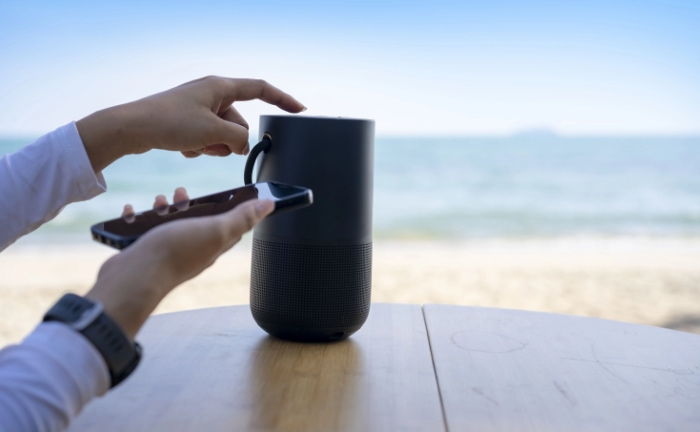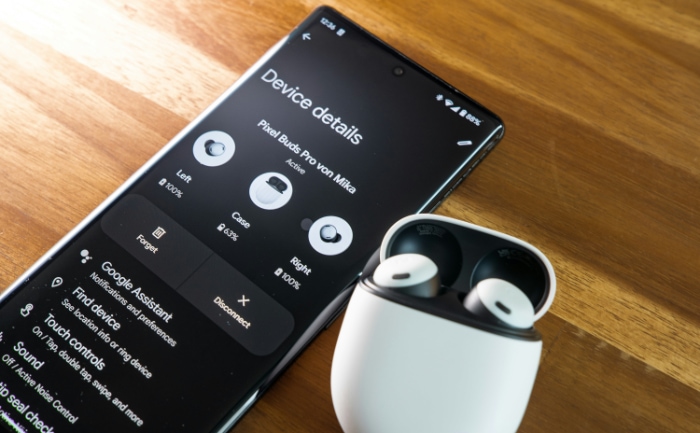Bluetooth vs. Bluetooth Low Energy: Connect Smarter

Connectivity without the clutter of cords is what sets today’s tech apart, and Bluetooth along with Bluetooth Low Energy (BLE) are leading the charge. These protocols are crucial for the seamless operation of everything from our music streaming to step tracking.
BLE: A New Era of Wireless Communication
Bluetooth Low Energy (BLE), also known as Bluetooth Smart, represents a significant evolution in the world of wireless technology. Introduced as part of the Bluetooth 4.0 specification, BLE was developed to address the growing need for a more energy-efficient form of wireless communication.
This need was driven by the proliferation of battery-operated devices such as fitness trackers, smartwatches, and IoT devices, which require continuous connectivity without rapidly depleting their power source.
The Birth and Growth of BLE
The development of BLE began with the intention of creating a wireless technology that could operate on minimal power while maintaining a communication range similar to that of its predecessor, Classic Bluetooth. Officially adopted in 2010, BLE was designed to cater to the emerging market of wearable tech and smart devices, which demanded low energy consumption to extend battery life without sacrificing connectivity.
Core Features and Design Objectives
BLE’s design revolves around efficient power consumption, aiming to significantly extend the battery life of devices. Unlike Classic Bluetooth, which is optimized for continuous data streaming (such as audio streaming through headphones), BLE focuses on short bursts of data transmission.
This approach reduces energy usage, making BLE ideal for applications that only need to exchange small amounts of data intermittently.
Furthermore, BLE supports multiple device connections and offers a flexible developer environment, allowing for the creation of a vast array of applications and services. Its architecture is streamlined, facilitating easier and more cost-effective implementation, especially in devices where complexity and space are limited.
Breaking Down the Technical Variations
Bluetooth technology has evolved to meet various needs, leading to the development of Classic Bluetooth and Bluetooth Low Energy (BLE). These two technologies, while similar in name, have distinct technical specifications that cater to different types of devices and applications.
Power Consumption, Range, and Data Transfer Rates
One of the most significant differences between Classic Bluetooth and BLE lies in their power consumption. BLE was designed to be extremely energy efficient, capable of operating on a small battery for months or even years.
This is a stark contrast to Classic Bluetooth, which requires more power due to its continuous data transmission capabilities, making it less suitable for devices with limited battery life.
In terms of range, both technologies are designed to cover approximately the same distance, usually up to 100 meters in open spaces. However, BLE achieves this with significantly lower power consumption.
Data transfer rates also differ, with Classic Bluetooth capable of higher speeds, up to 2-3 Mbps, compared to BLE’s maximum of 1 Mbps. This makes Classic Bluetooth more suitable for applications that require the streaming of audio or video data, while BLE is optimized for smaller, periodic data transmissions.
Communication Protocols and Device Compatibility
The communication protocols for Classic Bluetooth and BLE also vary, affecting how devices connect and interact with each other. Classic Bluetooth uses a more complex pairing process, involving discovery, pairing, and connection steps to establish a secure link. BLE simplifies this process, allowing for quicker connections, which is beneficial for devices that need to conserve energy and connect intermittently.
Device compatibility is another critical aspect influenced by these protocols. While most modern devices support both technologies, the specific use case often determines which version of Bluetooth is enabled by default.
For example, smartphones and tablets use BLE for location services and device synchronization, optimizing battery life without compromising performance.
Impact on Device Performance and User Experience
The technical differences between Classic Bluetooth and BLE have a direct impact on device performance and user experience. Devices that require long battery life and minimal data transfer, such as fitness trackers and smart home sensors, benefit from BLE’s efficiency.
Conversely, audio devices like headphones and speakers leverage Classic Bluetooth’s higher data throughput for better sound quality.
For users, these differences mean selecting products that align with their needs, whether prioritizing battery life, data speed, or connectivity range. Developers, on the other hand, must consider these factors when designing devices to ensure optimal performance and user satisfaction.
Real-World Applications of Bluetooth Technologies

As wireless technology becomes increasingly integral to our daily lives, both Classic Bluetooth and Bluetooth Low Energy (BLE) have found their niches in various applications and devices. The choice between using Bluetooth or BLE significantly influences how a device is designed and functions, affecting everything from battery life to connectivity speed.
Diverse Use Cases for Bluetooth and BLE
Classic Bluetooth has been a mainstay in wireless technology for years, primarily utilized in applications requiring continuous, high-bandwidth connectivity. It’s ideal for audio streaming devices such as wireless headphones, speakers, and car audio systems, where maintaining a stable, high-quality connection is paramount.
On the other hand, BLE is designed for scenarios where power efficiency is crucial but high data transfer rates are not necessary. This makes it perfect for wearables, fitness trackers, and smart home devices.
These applications benefit from BLE’s ability to remain in a low-power idle state until a connection is needed, thereby extending battery life significantly.
Examples Highlighting Technology Benefits
For instance, smartwatches utilize BLE for periodic updates from a connected smartphone, such as notifications or fitness tracking data, without draining the watch’s battery quickly. Similarly, home automation systems leverage BLE to connect various sensors and switches throughout the home, enabling them to communicate efficiently with a central hub while maintaining long battery lives.
In contrast, wireless speakers and headphones rely on Classic Bluetooth’s higher data throughput to deliver audio content without interruption or degradation in sound quality. The technology’s robust connection is also beneficial in automotive systems, allowing for hands-free calling and in-car entertainment.
Impact on Design and Functionality
Choosing between Bluetooth and BLE can significantly impact a device’s design and functionality. Devices that use BLE, for example, can afford to have smaller batteries but still promise long operational times, a critical design advantage for compact devices like fitness bands.
Additionally, BLE’s simplified connection protocol allows for quicker device pairing, an essential feature for user convenience in everyday gadgets.
Conversely, devices that require continuous data transmission, such as audio streaming devices, are often designed with larger batteries to accommodate the higher power consumption of Classic Bluetooth. This choice can affect the device’s size and weight, as well as how often users need to charge the device.
Ultimately, the decision to use Classic Bluetooth or BLE hinges on the specific needs of the application. This decision profoundly influences not only the user’s experience in terms of battery life and connectivity but also the physical design and capabilities of the device itself.
Making the Right Choice: Bluetooth or BLE
Deciding whether to integrate Classic Bluetooth or Bluetooth Low Energy (BLE) into a new device or project is a critical step that can determine the project’s success and viability. This choice impacts not just the device’s performance but also its market appeal, operational efficiency, and even environmental footprint.
Key Considerations for Selection
When choosing between Classic Bluetooth and BLE, several essential factors come into play. First and foremost is the primary function of the device.
If the device requires continuous data streaming, such as audio or video, Classic Bluetooth is generally the preferred choice due to its higher data transfer rates. Conversely, for devices that need to communicate small amounts of data intermittently—like wearables monitoring health metrics—BLE’s low power consumption makes it the ideal option.
Battery life is another critical consideration. Devices designed for long-term use without frequent recharging benefit significantly from BLE’s energy-efficient design.
Additionally, the expected range of operation can influence the decision; although both technologies offer similar ranges, the efficiency of BLE at longer distances with minimal power consumption is a distinct advantage.
Guidelines for Developers and Manufacturers
For developers and manufacturers, making the optimal choice between Bluetooth and BLE involves a thorough analysis of the product’s intended use case. Consider the user experience: Will the device be used in a manner that prioritizes battery life, or is uninterrupted data transmission more critical? Also, think about the development and operational costs.
BLE may offer savings in terms of energy consumption and, by extension, operational costs, especially for devices deployed in large numbers across smart homes or cities.
Compatibility with other devices is another important factor. Ensuring that the chosen Bluetooth technology aligns with the standards and capabilities of other devices it will interact with is crucial for a seamless user experience.
Future Outlook on Bluetooth Technologies
Looking forward, the adoption and development of both Bluetooth and BLE are expected to continue growing, driven by the expanding universe of IoT devices and the ongoing demand for wireless connectivity solutions. Innovations in BLE technology are likely to further enhance its attractiveness for new applications, particularly those emphasizing energy efficiency and long battery life.
Meanwhile, Classic Bluetooth will remain vital in applications requiring high-throughput data transmission.
The continuous evolution of these technologies will likely lead to further diversification in their applications, with new features and capabilities being developed to address specific market needs. As wireless connectivity becomes an even more integral part of our lives, the importance of choosing the right technology for the right application has never been more apparent.
Conclusion
Selecting the right wireless technology between Bluetooth and Bluetooth Low Energy (BLE) is more than a matter of technical preference; it’s a decision that impacts everything from device functionality and user experience to battery life and operational efficiency. Throughout this exploration, the distinction between these two technologies has been laid out, highlighting their origins, technical specifications, applications, and the factors influencing the choice between them.
Classic Bluetooth, with its higher data transfer rates, remains indispensable for devices requiring continuous, high-bandwidth connectivity. In contrast, BLE stands out for its low energy consumption, making it ideal for a new generation of connected devices where efficiency is paramount.
The landscape of wireless communication is constantly evolving, with both technologies continuously being refined to meet the demands of a world where connectivity is ever more critical. For developers and manufacturers, understanding these nuances is crucial for designing devices that meet users’ needs in terms of performance, convenience, and sustainability.
As we look to the future, the role of Bluetooth and BLE will undoubtedly expand, driving innovation in wireless connectivity and opening new possibilities for smart devices and IoT applications.


